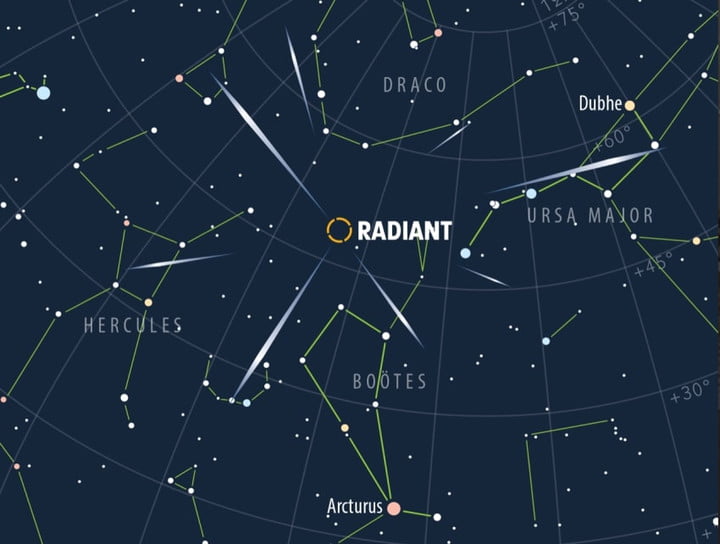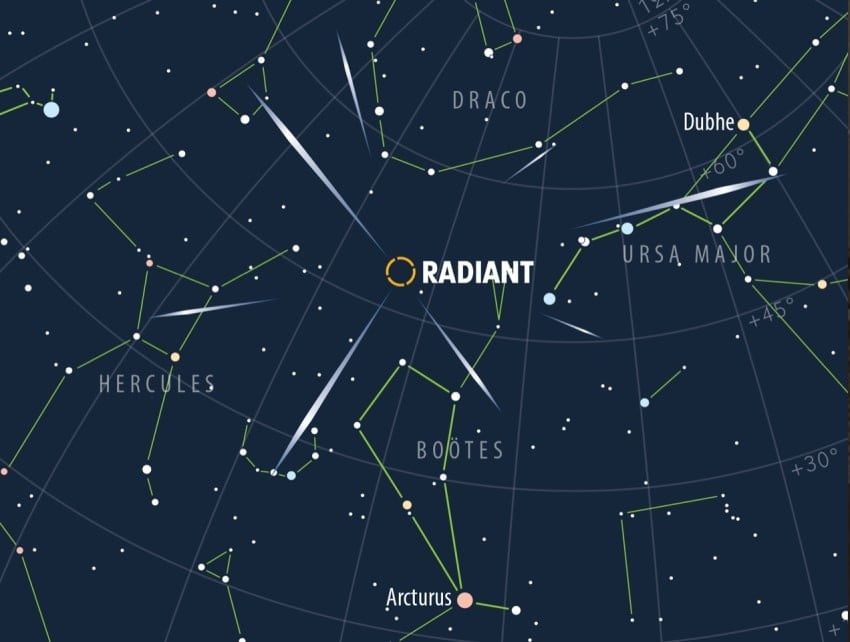This week will see the peak of the Quadrantids meteor shower, which could be the most spectacular meteor shower of 2022. There will be up to 50 meters or more visible per hour when the shower is at its peak. So if you fancy a night of stargazing, we’ve got the details on how to watch.
The shower will peak between January 2 and January 4, and should be visible across the northern hemisphere. Meteor showers like the Quadrantids happen when Earth passes through clouds of debris in its orbit, and small particles of this debris enter Earth’s atmosphere. The particles for the shower this week will be traveling at tremendous speeds of around 25 miles per second and will burn up in the atmosphere. As they burn up they glow, creating a streak of light across the sky.

As for why this shower is called the Quadrantids, it is named after the now-obsolete name of constellation Quadrans Muralis where the first observations of the shower appeared to originate in 1825. The names of constellations were agreed by the International Astronomical Union in 1922 and did not include Quadrans Muralis, but the name of the meteor shower has persisted.
How to watch the Quadrantids meteor shower
According to NASA, viewers in the U.S. will get the best view of the shower on the night of January 2 and the morning of January 3. According the to the Royal Astronomical Society (RAS), viewers in the U.K. will get the best view “at 20:40 GMT on 3 January. This is quite sharply defined, and the number of meteors drops off by 50% two hours later. To offset this, more meteors tend to be seen when the radiant is higher in the sky, and also in the hours before dawn, so UK observers could see a decent display throughout the night.”
Sometimes the moon can interfere with viewing showers if it is very bright, but the RAS says this shouldn’t be a problem for this shower: “This time the Moon will be just past New, so will its light will not interfere with the view and there will be a real benefit from watching the meteor shower under dark skies away from the lights of towns and cities.”
And as for how to actually watch the shower, the good news is that you don’t need binoculars, telescopes, or any special equipment. Just head outside after dark and look up. “Unlike many astronomical events, meteor showers are easy to watch and no special equipment is needed,” the RAS writes. “A meteor shower is best observed with the naked eye, and a reclining chair, a warm blanket and a hot drink make viewing much more comfortable on a cold January night.”
